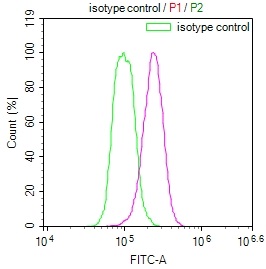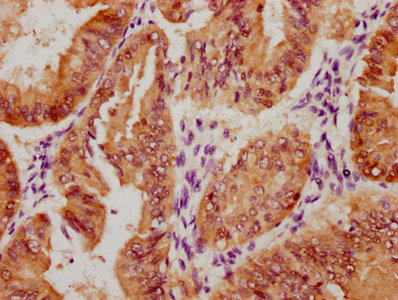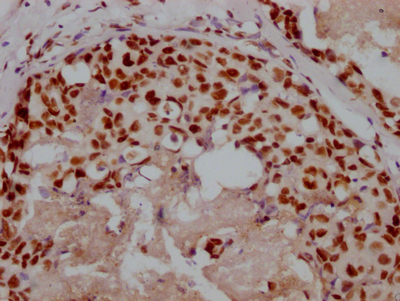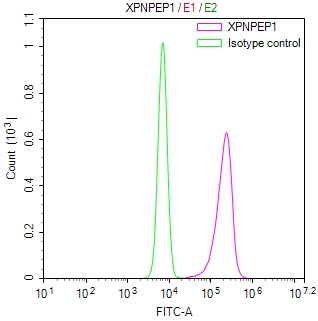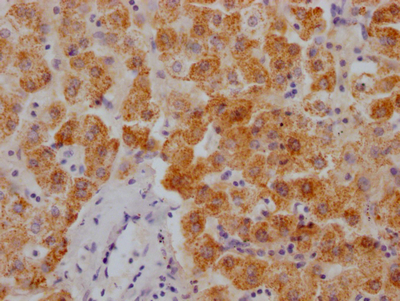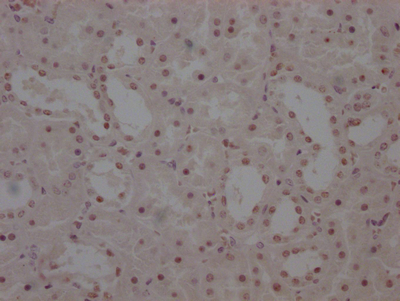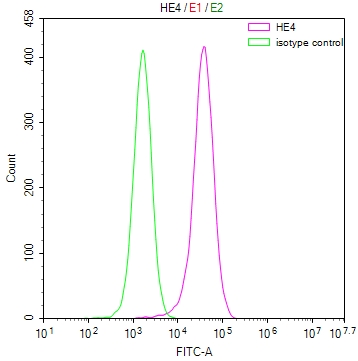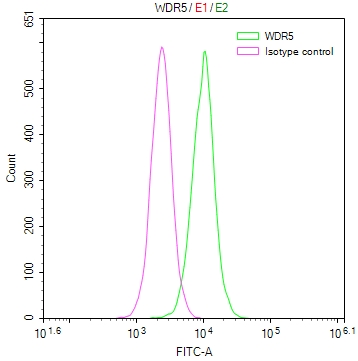PSAP Antibody
-
中文名稱:PSAP兔多克隆抗體
-
貨號(hào):CSB-PA018836GA01HU
-
規(guī)格:¥3,900
-
其他:
產(chǎn)品詳情
-
Uniprot No.:
-
基因名:PSAP
-
別名:A1 activator antibody; Cerebroside sulfate activator antibody; Co-beta-glucosidase antibody; Component C antibody; CSAct antibody; Dispersin antibody; GLBA antibody; Glucosylceramidase activator antibody; Proactivator polypeptide antibody; Proactivator polypeptide precursor antibody; Prosaposin (sphingolipid activator protein 1) antibody; prosaposin (variant Gaucher disease and variant metachromatic leukodystrophy) antibody; Prosaposin antibody; Protein A antibody; Protein C antibody; PSAP antibody; SAP 1 antibody; SAP 2 antibody; SAP-1 antibody; SAP-2 antibody; SAP_HUMAN antibody; SAP1 antibody; Saposin A antibody; Saposin B antibody; Saposin B Val antibody; Saposin C antibody; Saposin D antibody; Saposin-D antibody; Saposins antibody; Sgp1 antibody; Sphingolipid activator protein 1 antibody; Sphingolipid activator protein 2 antibody; Sulfated glycoprotein 1 antibody; Sulfatide/GM1 activator antibody
-
宿主:Rabbit
-
反應(yīng)種屬:Human,Mouse,Rat
-
免疫原:Human PSAP
-
免疫原種屬:Homo sapiens (Human)
-
抗體亞型:IgG
-
純化方式:Antigen Affinity purified
-
濃度:It differs from different batches. Please contact us to confirm it.
-
保存緩沖液:PBS with 0.02% Sodium Azide, 50% Glycerol, pH 7.3. -20°C, Avoid freeze / thaw cycles.
-
產(chǎn)品提供形式:Liquid
-
應(yīng)用范圍:ELISA,WB,IHC
-
Protocols:
-
儲(chǔ)存條件:Upon receipt, store at -20°C or -80°C. Avoid repeated freeze.
-
貨期:Basically, we can dispatch the products out in 1-3 working days after receiving your orders. Delivery time maybe differs from different purchasing way or location, please kindly consult your local distributors for specific delivery time.
-
用途:For Research Use Only. Not for use in diagnostic or therapeutic procedures.
引用文獻(xiàn)
- Efficacy of sialic acid supplementation in early life in autism model rats X Yang, H Wei, J Li, G Li, Y Zhang, H Li,Scientific Reports,2025
相關(guān)產(chǎn)品
靶點(diǎn)詳情
-
功能:Saposin-A and saposin-C stimulate the hydrolysis of glucosylceramide by beta-glucosylceramidase (EC 3.2.1.45) and galactosylceramide by beta-galactosylceramidase (EC 3.2.1.46). Saposin-C apparently acts by combining with the enzyme and acidic lipid to form an activated complex, rather than by solubilizing the substrate.; Saposin-B stimulates the hydrolysis of galacto-cerebroside sulfate by arylsulfatase A (EC 3.1.6.8), GM1 gangliosides by beta-galactosidase (EC 3.2.1.23) and globotriaosylceramide by alpha-galactosidase A (EC 3.2.1.22). Saposin-B forms a solubilizing complex with the substrates of the sphingolipid hydrolases.; Saposin-D is a specific sphingomyelin phosphodiesterase activator (EC 3.1.4.12).; Behaves as a myelinotrophic and neurotrophic factor, these effects are mediated by its G-protein-coupled receptors, GPR37 and GPR37L1, undergoing ligand-mediated internalization followed by ERK phosphorylation signaling.; Saposins are specific low-molecular mass non-enzymic proteins, they participate in the lysosomal degradation of sphingolipids, which takes place by the sequential action of specific hydrolases.
-
基因功能參考文獻(xiàn):
- Accumulating evidence suggests that PGRN is essential for proper lysosomal function, but the precise mechanisms involved are not known. Here, we show that PGRN facilitates neuronal uptake and lysosomal delivery of prosaposin (PSAP), the precursor of saposin peptides that are essential for lysosomal glycosphingolipid degradation. PMID: 28541286
- Both PSAP reduction and overexpression lead to significantly elevated extracellular progranulin (PGRN) levels. Intriguingly, PSAP knockdown increases PGRN monomers, whereas PSAP overexpression increases PGRN oligomers, partly through a protein-protein interaction. PMID: 27356620
- Study demonstrated that the binding of CST3 and PSAP decreased the inhibitory effects of CST3 on proteinase in vitro. The co-localization of both proteins was detected in cultured cells and in Bunina body-containing motor neurons from patients with amyotrophic lateral sclerosis, suggesting that they might be involved in the process of Bunina body formation. PMID: 29249381
- This report documents the successful use of plasma lysoSLs profiling in the PSAP deficiency diagnosis, as a reliable and informative tool to obtain a preliminary information in infantile cases with complex traits displaying severe neurological signs and visceral involvement. PMID: 26831127
- an extensive review of all the PSAP-causative variants published in the literature to date, accounting for a total of 10 PSAP allele types (review) PMID: 26462614
- Our findings suggest a novel pharmacological approach to Sap C deficiency directed to treat major secondary pathological aspects in this disorder. PMID: 25926625
- PSAP is a secreted biomarker. PMID: 26341737
- Data suggested that the abundance of Psap in sperm sample may be a sensitive endpoint to predict PCB exposure. PMID: 26045750
- Prosaposin facilitates sortilin-independent lysosomal trafficking of progranulin. PMID: 26370502
- findings support a lung metastasis-promoting function of the miR-23b/27b/24 cluster of miRNAs, which functions in part through the direct inhibition of PSAP in breast cancer PMID: 24966325
- Of the 2575 proteins identified, proteins upregulated in gallbladder cancer included several lysosomal proteins such as prosaposin, cathepsin Z and cathepsin H. PMID: 24657443
- Saposin C protects glucocerebrosidase against alpha-synuclein inhibition. PMID: 24070323
- Urine of patients with early prostate cancer contains lower levels of light chain fragments of inter-alpha-trypsin inhibitor and prosaposin fragment or saposin B. PMID: 23417432
- These findings suggested that prosaposin might enhance estrogen receptor alpha-mediated signaling axis and play a role in breast cancer development and progression. PMID: 22738294
- PSAP is a novel TFPI-2-interacting protein and that the binding sites are the KD2 of TFPI-2 and the C-terminus of PSAP. PMID: 21943334
- novel esophageal squamous cell carcinoma marker PSAP was identified by mass spectrometry and immunohistochemical analysis PMID: 21743296
- PSAP is a target gene of the BACH1 transcription factor according to ChIP-seq analysis in HEK 293 cells. PMID: 21555518
- saposin C caused stimulation of androgen receptor expression and activity by associations with Src kinases PMID: 21328455
- Saposin B(Sap B) is not a limiting factor of the coupled Sap B-arylsulfatase A reaction in mouse kidney cells even if sulfatide has accumulated to unphysiologically high levels PMID: 19224915
- The biological properties of cells from four recently described Gaucher disease patients carrying mutations in the Sap C domain of the PSAP gene have been characterized. PMID: 20484222
- PSAP is involved in prostate cancer invasion. PMID: 20132547
- reconstruction of the order of internal duplications that gave rise to the four saposins by using phylogenetic tools PMID: 11734895
- procathepsin D interacts with prosaposin in human breast and ovarian cancer cells. PMID: 12083803
- crystal structure reveals a dimeric shell for lipid binding PMID: 12518053
- data indicate that saposin C is required for acid beta-glucosidase resistance to proteolytic degradation in the cell PMID: 12813057
- The structure of saposin C compared to other saposin-fold family members provides an explanation for function variability of this protein family. PMID: 14674747
- model proposed in which saposin C exposes lipid antigens from intralysosomal membranes for loading onto CD1b PMID: 14716313
- There might be a potential pleuripotent regulatory function for prosaposin in prostate cancer. PMID: 15305334
- Amplification and overexpression of PSAP was studied in prostatic neoplasms. PMID: 16080200
- determination of crystal structure of human saposins A and C to 2.0 Angstroms and 2.4 Angstroms, respectively and both reveal the compact, monomeric saposin fold PMID: 16823039
- FSAP (Factor VII-activating protease) can cleave and inactivate PDGF-BB (platelet-derived growth factor-BB) and thereby inhibits VSMC (vascular smooth-muscle cell) proliferation. PMID: 17300216
- saposin B may facilitate lipid binding to CD1d molecules throughout the endocytic pathway PMID: 17372201
- an unglycosylated Sap-B variant, Asn215His, which causes a fatal sphingolipid storage disease, lost the ability to extract membrane lipids at acidic pH in the presence of BMP PMID: 17561962
- Expression of saposin C-originated saposin C may upregulate AR gene expression and activate the androgen receptor transcriptional function in an androgen-independent manner in prostate cancer cells. PMID: 17712477
- These data for the first time demonstrate that not only saposin C or PSAP regulates AR expression/activity, but also function as an androgen-regulated gene in prostate stromal cells. PMID: 18481277
- findings point to the role of lipid rafts in the prosaposin-triggered signalling pathway, thus supporting a role for this factor as a new component of the multimolecular signalling complex involved in the neurotrophic response. PMID: 18761669
- two new patients with PSAP gene defects; one, with pSap-d, who had a severe neurovisceral dystrophy and died as a neonate, and the other with SapB-d, who presented with a metachromatic leukodystrophy-like disorder but had normal arylsulfatase activity PMID: 19267410
- Report the up-regulation of prosaposin in the senescent fibroblasts and endothelial cells. PMID: 19471889
- Prosaposin functions in a paracrine and endocrine fashion by stimulating the expression of thrombospondin-1 (Tsp-1) in fibroblasts present in both primary tumors and distant organs, doing so in a p53-dependent manner. PMID: 19581582
- Saposin C or its precursor (PSAP) function as an androgen-agonist and upregulate androgen receptor and prostate-specific antigen expression/activity in androgen-responsive prostate cancer cells LNCaP, TRAMP-C1 and -C2., and CWR 22RV1. PMID: 17044040
- Prosaposin is an androgen-target gene and its expression in androgen-responsive prostate cancer cells can be upregulated by male hormones. PMID: 17171640
- Cloning of prosaposin gene from androgen-independent (AI) prostate cancer (PCa) cells and it genomic amplification in human metastatic AI PCa cell lines and punch biopsy samples of prostate cancer xenografts and lymph node metastases. PMID: 16080200
- Saposin C stimulates prostate cancer and stromal cells growth and invasion and uPA/uPAR expression, and activates p42/44 and SAPK/JNK signaling pathways of MAPK. PMID: 15897971
- Prosaposin and/or saposin C via modulation of caspases expression/activity and/or PI3K/Akt signaling pathway act as a survival and anti-apoptotic factor for prostate cancer cells. PMID: 15548330
顯示更多
收起更多
-
相關(guān)疾病:Combined saposin deficiency (CSAPD); Leukodystrophy metachromatic due to saposin-B deficiency (MLD-SAPB); Gaucher disease, atypical, due to saposin C deficiency (AGD); Krabbe disease, atypical, due to saposin A deficiency (AKRD)
-
亞細(xì)胞定位:Lysosome.; [Prosaposin]: Secreted.
-
數(shù)據(jù)庫鏈接:
Most popular with customers
-
YWHAB Recombinant Monoclonal Antibody
Applications: ELISA, WB, IHC, IF, FC
Species Reactivity: Human, Mouse, Rat
-
Phospho-YAP1 (S127) Recombinant Monoclonal Antibody
Applications: ELISA, WB, IHC
Species Reactivity: Human
-
-
-
-
-
-


